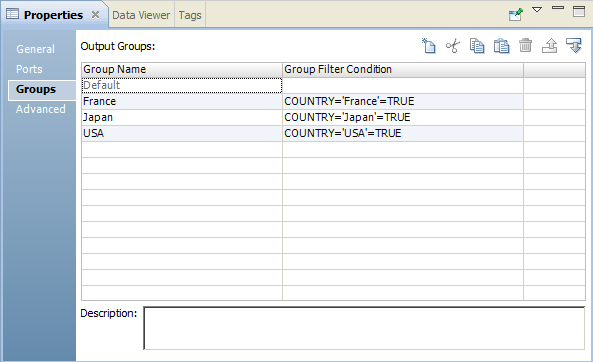Informatica Data Quality
- Informatica Data Quality 10.5
- All Products



Group Name
| Group Filter Condition
|
|---|---|
France
| customer_name=‘France’=TRUE
|
Japan
| customer_name=‘Japan’=TRUE
|
USA
| customer_name=‘USA’=TRUE
|
Group Name
| Group Filter Condition
|
|---|---|
Output Group 1
| employee_salary > 1000
|
Output Group 2
| employee_salary > 2000
|